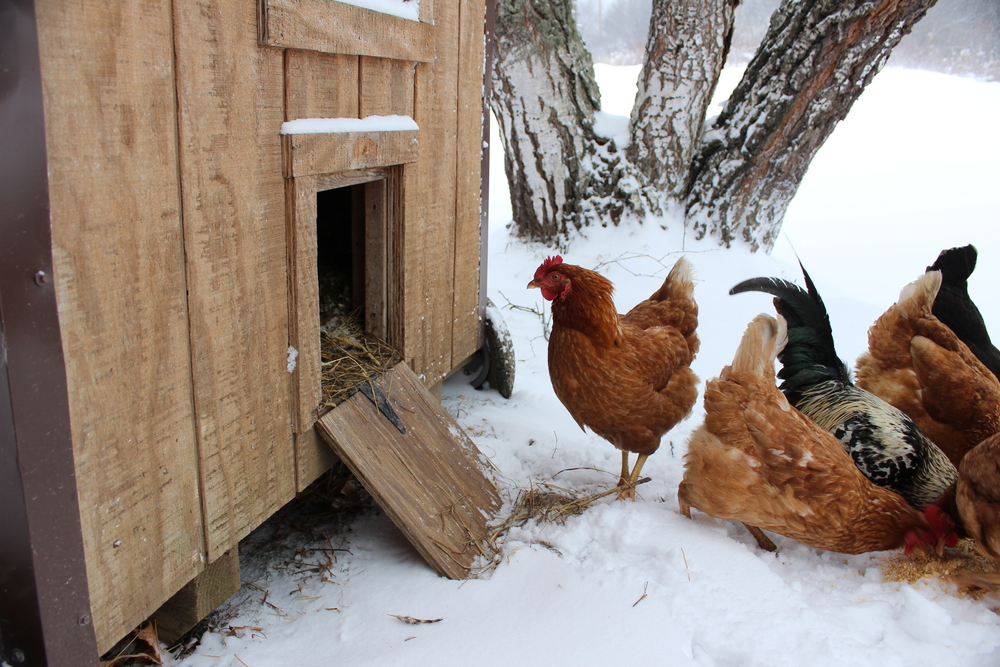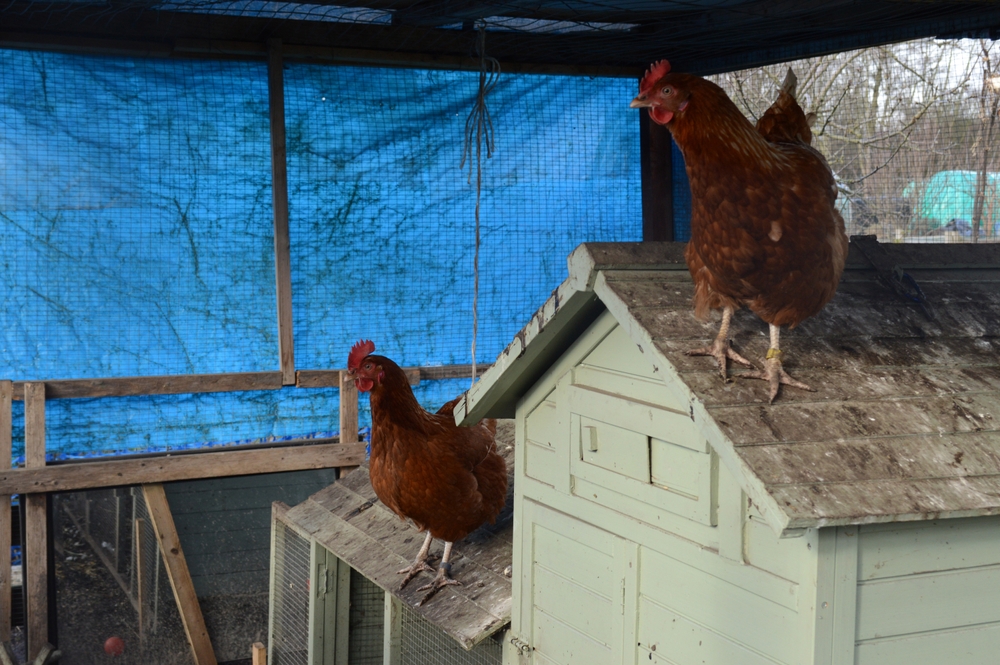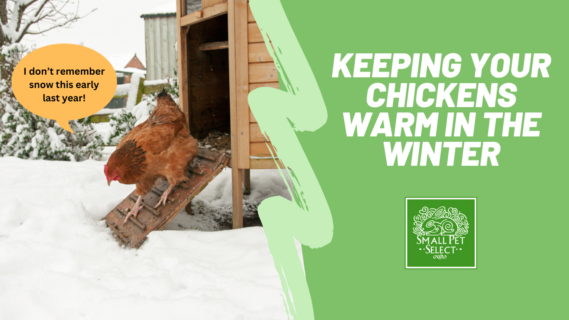Winter is just around the corner so it’s time to prepare! Getting everything all set before it's especially cold will make things easier on you and it will ensure the chickens are all set. You never know when that first cold front will come in so let’s focus on keeping your chickens warm now!
Winterizing your chicken coop is a must if you want to have healthy chickens. Keeping their stress levels low, and all of their resources available to them is the only way to keep your chickens happy and healthy.
To winterize your chicken coop you need to consider the following:
- insulation
- bedding
- ventilation
- elevated roosts
- temperature monitoring
- water dishes
- extra calories
Winterizing your chicken coop looks more complicated than it is. We’re running through what you need to consider today so that you will have a magical winter with your chicken friends.
To the coop!
Keeping Your Chickens Warm With Insulation
Chickens are hardy animals that can handle cold temperatures. The goal is to keep the temperature in the coop above freezing and to avoid drafts. Chickens are vulnerable to drafts!
To prevent drafts, patch up any holes or gaps in the walls and roof of the coop. You can use caulk or foam insulation. We will talk more about how to balance this with ventilation in a minute.
Insulation materials are completely necessary for keeping your chickens warm but you don’t want them to be near your chickens where they will peck at them. Foam boards or straw bales can be added around the walls for insulation. Bedding and litter insulate the bottom of your chicken coop.
Bedding
Especially in the winter, don’t skimp on the bedding! Deep litter creates insulation and it also can generate heat as it decomposes. It can also create a place for your chicken to use as a blanket for warmth.
Pine Bedding Chicken Shavings is perfect for the bottom of your coop. It’s 100% biodegradable so it can be composted. It’s very absorbent to keep your coop dry which is crucial for keeping your chickens warm.
Ventilation
So while we don’t want drafts of cold air blowing through the coop, we also don’t want there to be moisture building up in the coop. You want moist air to escape so it doesn’t make the coop colder and so it doesn’t create respiratory issues.
Eliminate drafts in the bottom and sides of your chicken coop but allow for some small ventilation at the top of the coop. Warm moist air rises and if you have that escape at the top you can decrease unwanted moisture.

Elevated Roosts
Chickens will huddle together at night on roosting bars. Make sure your roosting bars are wide enough so they can sit on their feet and cover them with feathers. Warm air rises so keep the roosts at least 2 feet off the ground where it will be warmer.
Temperature Monitoring
Add a thermometer to your chicken coop so you can see if the temperature is too low and make adjustments. 40 degrees or above is what you should aim for. It’s important to check the temperature regularly so you can prevent your chickens’ water from freezing and keep your hens comfortable.
Heat lamps can be a fire hazard so not the best option for keeping your chickens warm. There are safer options for supplemental heating such as flat-panel radiant heaters.
Keep Drinking Water From Freezing
If the temperature in your chicken coop falls below 35 degrees then you need to have a heated waterer or a water heater base. Chickens can tolerate cold weather but they can’t live without water!
Protect The Coop From Wind and Snow
If your coop is exposed to wind you can use tarps as windbreaks around the outside to reduce wind chill. Clear snow off of their walkway so they can get outside of their coop easier. Many chickens don’t like walking in deep snow!
If possible, keeping your coop under a covered shelter will make a big difference when it comes to keeping your chickens warm.

More Calories
Chickens use more energy to stay warm in the winter so include more high-calorie foods like Grub Bugs, mealworms, and Chicken Scratch in their winter diet. Keeping your chickens warm is also about keeping them fed!
Supplemental Lighting
If you want to keep egg production up in the winter then consider adding lights to the chicken coop. Short winter days can cause egg production to drop. 14-16 hours of light each day is good for egg production. You can use timers to turn the lights on early in the morning and later into the evening.
Preventing Frostbite
Putting petroleum jelly on your chickens’ combs and wattles helps prevent frostbite on the coldest days. Chickens with large wattles and combs are especially susceptible to frostbite and have a harder time in cold weather.
Keeping Your Chickens Warm With A Clean Coop
In addition to all the steps you can take that we previously discussed, it's important to be extra vigilant with your chicken chores in the winter. Remove wet bedding regularly to prevent moisture and bacteria build-up.
Things are much colder when they’re wet as you know. You also know that illness in the winter can be rough! Keeping the bacteria levels down and everything clean will give your chickens their best shot at a happy and healthy winter season.
Now go get your chickens in a row! Happy winter!
We are not veterinarians, and none of our information should be construed as veterinary advice.
Before adding any new product, please consult your exotic veterinarian. If your pet is acting unwell and you have concerns for their well being, please contact your vet immediately.





